Fall is slowly changing over to winter here in Maine. I have a long list of designs to work on and plant catalogs to pore through in the coming months. Being inside during the winter months is also a great time to dream of new gardens and fun displays. One display I have toyed with for years is to have an indoor space decked out like a hunt club lodge.
A hunt club lodge would typically have antlers decorating the walls, showing off the trophies from years of hunting. Instead of antlers, I want to display giant, mounted staghorn ferns on the walls. I can just imagine settling down with a good book and a glass of red wine in front of the fireplace with walls of staghorn ferns hanging all around.
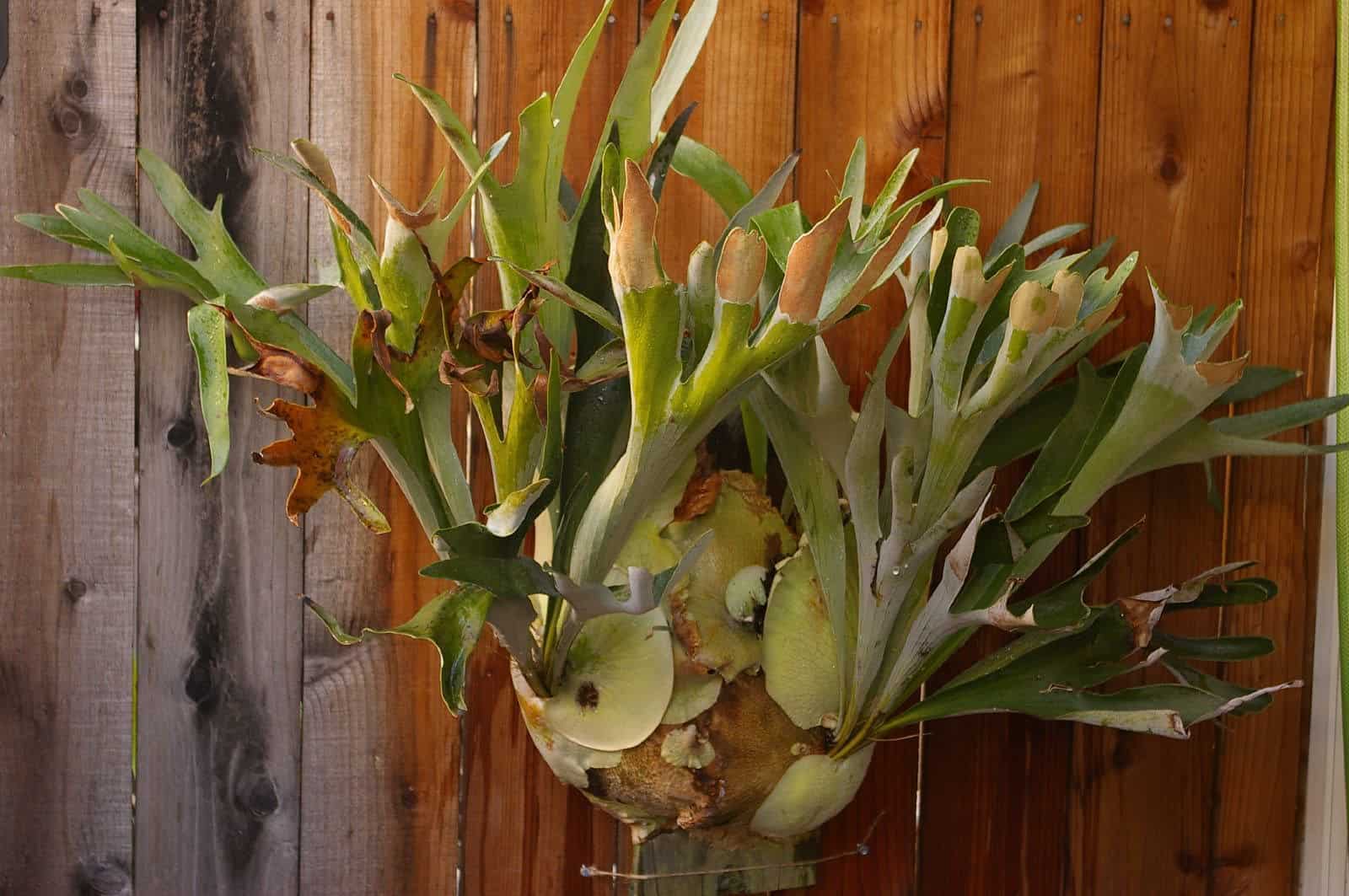
Stag horn ferns (genus Platycerium) are a group of large-leaved, epiphytic plants from tropical regions of the world. Their cool appearance is due to two types of fronds: sterile and fertile fronds.
The sterile fronds (also known as the basal fronds)cover the roots and protect them from drying out. They are also the oldest and largest fronds, and they are for the back plate and the base of the plant that protects the root system and is mounted to whatever is supporting it.
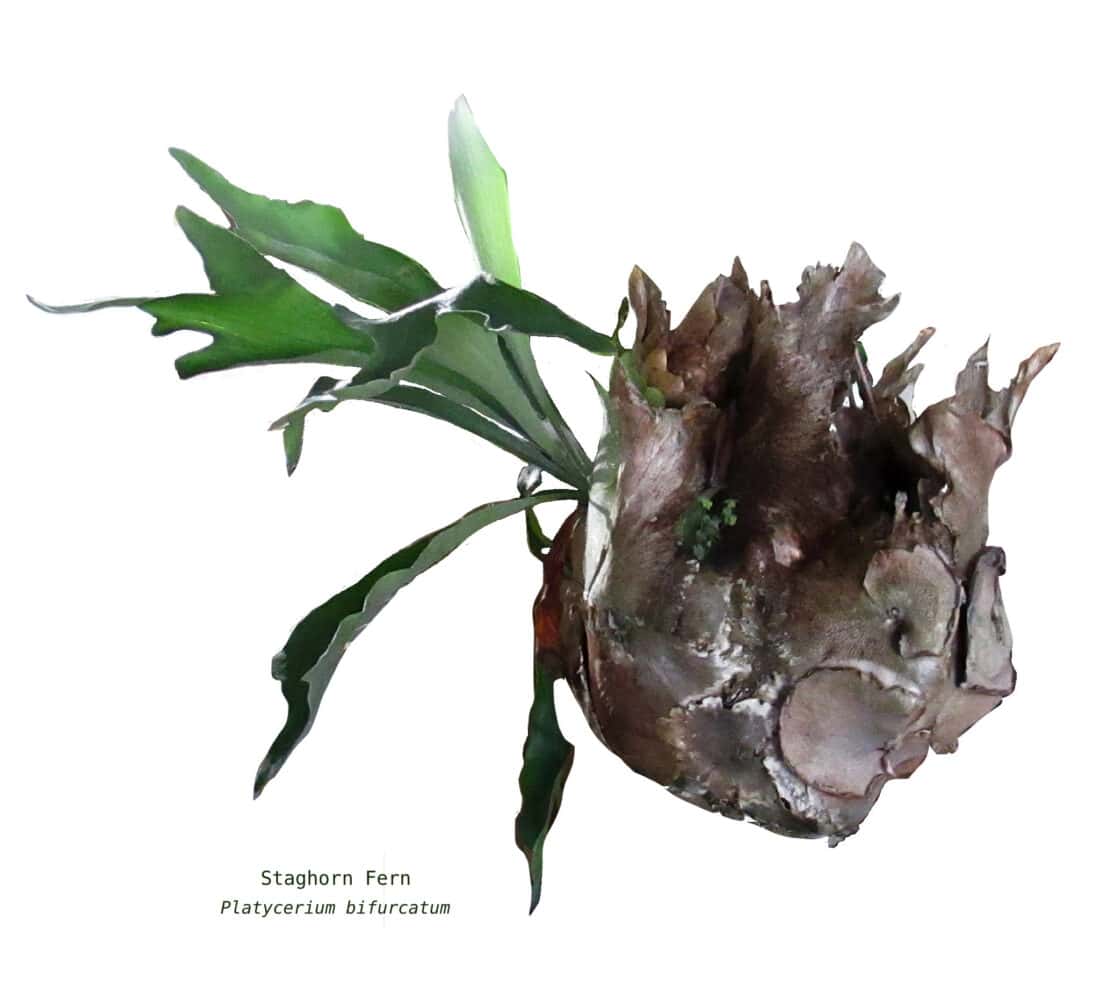
The fertile fronds (also known as the antler fronds) hang down from the base and resemble deer or elk antlers. When stag horn ferns are grown in gardens, they are usually mounted on a wooden plate and hung from the wall. At CMBG, we have about a half dozen small Platycerium that we grew in containers this past summer. Next week, I hope to mount these onto a wooden board and hang from the wall of my office.
Over time, these ferns can become large and quite the show stopper in the garden or conservatory. I have high hopes of bringing our small stag horns along and maybe, one day, when we build a conservatory, we can hang them from the walls like the living horticultural hunt lodge of my dreams.
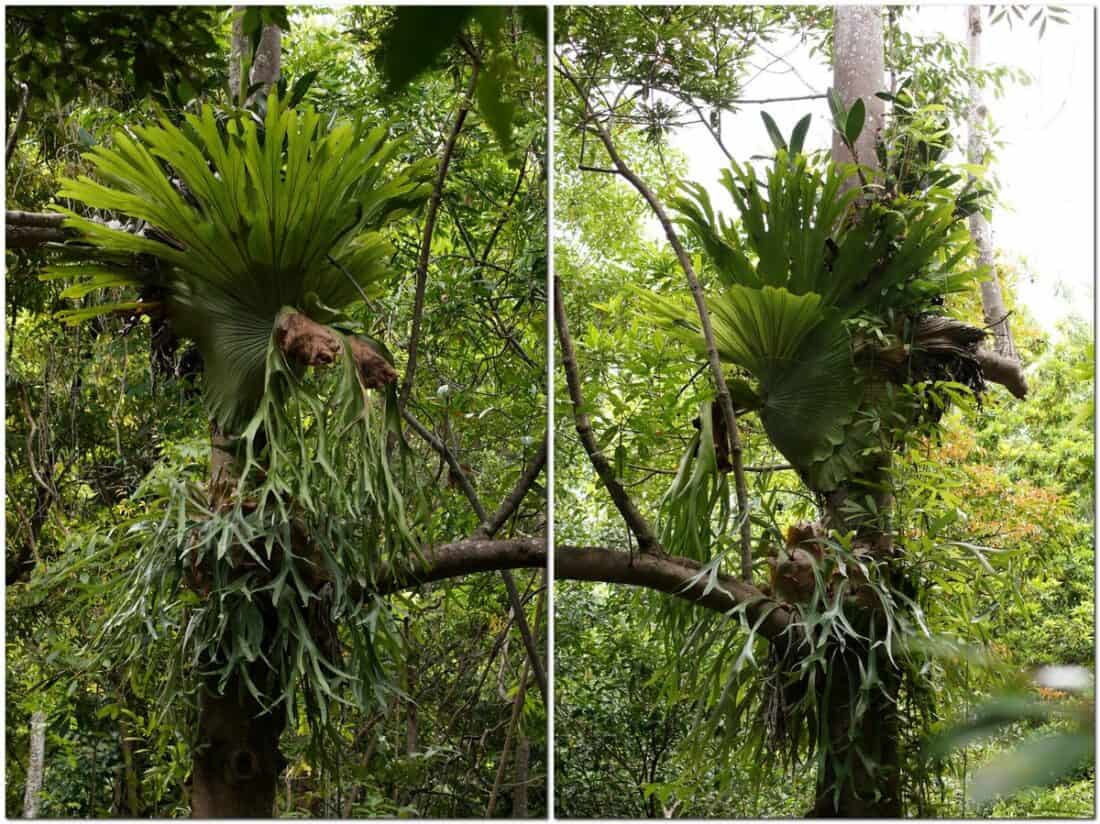
Staghorn ferns, scientifically known as Platycerium spp., (Platycerium bifurcatum are easy to find – you can Buy Staghorn ferns from Terrain – https://rstyle.me/+qToxvDW6eUm8Mpva1353Bg) are fascinating and visually striking plants native to tropical regions of Africa, Southeast Asia, Australia, and South America. They are interesting as a house plant. They are epiphytic, meaning they naturally grow on trees or rocks, rather than in soil.
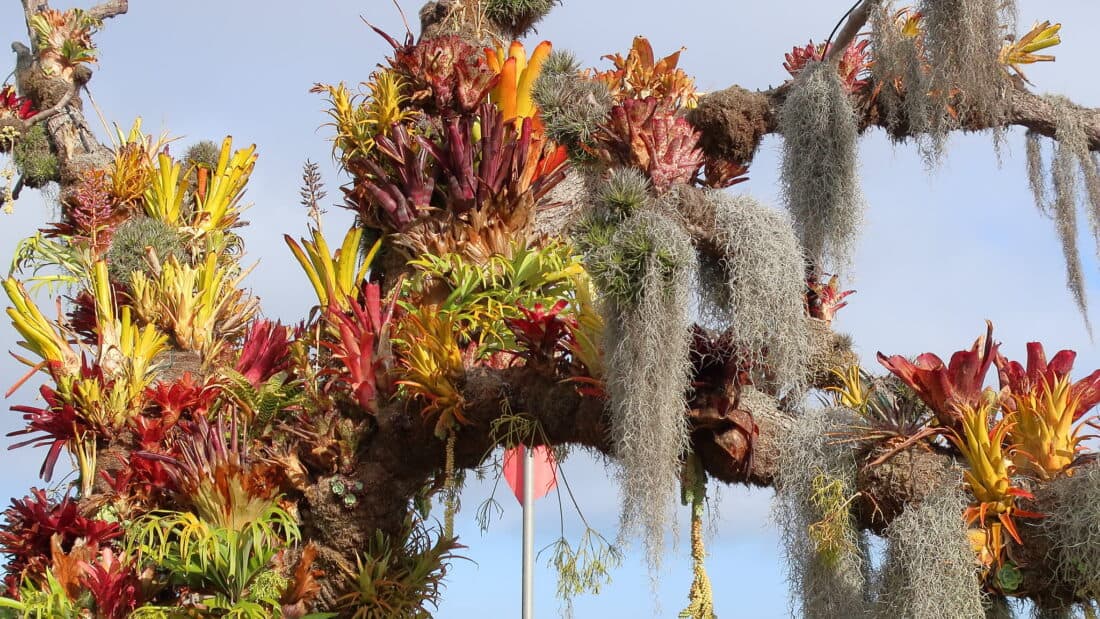
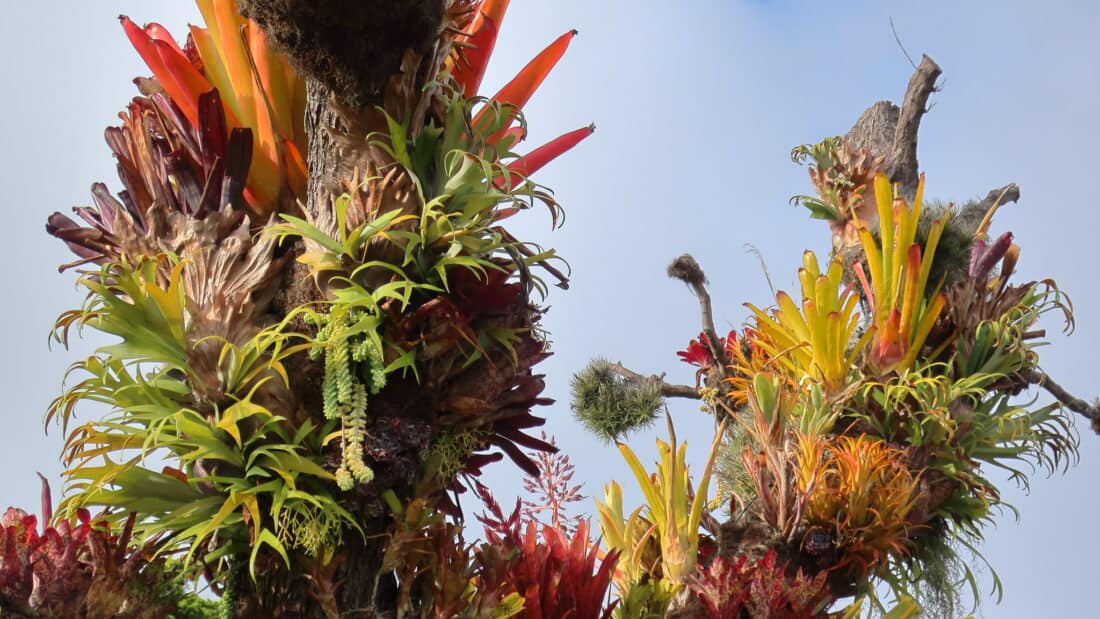
About stag horn ferns:
- Appearance: Stag horn ferns have two distinct types of fronds: sterile shield fronds and fertile fronds. The sterile fronds are rounded and shield-shaped, covering and protecting the base of the plant. The fertile fronds, which resemble stag antlers, emerge from the center of the plant and can vary in size and shape depending on the species.
- Growing Habit: Stag horn ferns attach themselves to their host surface using modified roots called “holdfasts.” In the wild, you will often find them in the crooks of trees. They absorb moisture and nutrients from the air and rainwater, as well as any organic matter that accumulates around them. This adaptation allows them to thrive in their natural habitats, such as rainforests and tropical regions.
- Care Requirements: Stag horn ferns prefer bright, indirect light and high humidity. They should be watered regularly to keep the growing medium (usually a moss or bark mixture) consistently moist but not waterlogged. Fertilize them sparingly with a balanced fertilizer diluted to half strength during the growing season.
- Propagation: Stag horn ferns can be propagated by spores, division, or offsets. Spores are produced on the undersides of fertile fronds and can be collected to grow new plants, though this method requires patience as it is slow. Division involves separating offsets or pups from the main plant and planting them separately.
- Versatility: These ferns are popular choices for mounting on wooden boards or in hanging baskets, as they create stunning and unique displays. They can also be grown in pots filled with a well-draining soil mix, though they may not reach their full potential in this setup.
- Aesthetic Value: Stag horn ferns are prized for their ornamental value and architectural form. They add a touch of tropical elegance to indoor and outdoor spaces. Botanical enthusiasts and collectors find them especially appealing because each plant has such a notable and unique personality and shape.
- Pests and Diseases: While relatively resistant to pests and diseases, stag horn ferns may occasionally encounter issues such as scale insects, mealybugs, or fungal infections. Regular inspection and proper care can help prevent and manage these problems.

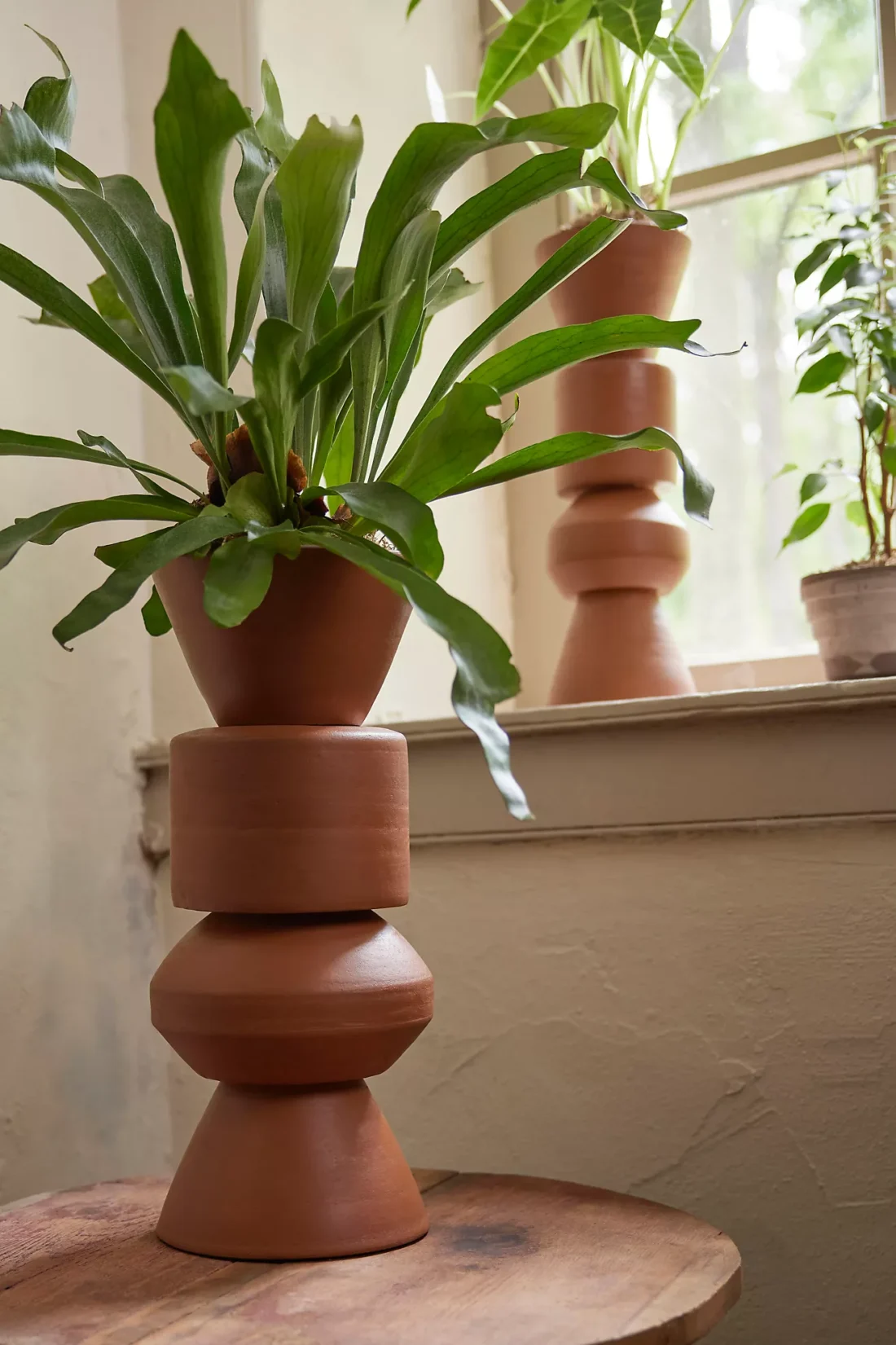
How to Mount a Stag Horn Fern on A Wooden Board
- Choose a Suitable Board: Select a sturdy and untreated wooden board that is large enough to accommodate the fern’s root ball and allow for future growth. Hardwood boards like oak or cedar are ideal choices as they are durable and resistant to decay.
- Prepare the Board: Soak the wooden board in water for several hours or overnight to ensure it is thoroughly hydrated. This will help prevent the board from absorbing moisture from the fern’s root system and drying out too quickly.
- Attach a Mounting Bracket: Install a sturdy mounting bracket or hardware on the back of the wooden board. This will allow you to securely hang the mounted fern on a wall or fence.
- Prepare the Fern: Remove the stag horn fern from its pot and gently shake off excess soil from the roots. Trim any dead or damaged fronds and inspect the root ball for signs of pests or disease.
- Position the Fern: Place the fern on the wooden board with the fronds extending outward and the root ball positioned towards the bottom of the board. Arrange the fronds in an attractive and balanced manner, ensuring they have enough space to grow without overcrowding. You can add some organic material around the base of the plant.
- Secure the Fern: Use a nylon fishing line, wire mesh, or strips of pantyhose to secure the fern to the wooden board. Wrap the material around the root ball and anchor it to the board, ensuring it is snug but not too tight to allow airflow.
- Add Moisture Retention Material: Place a layer of sphagnum moss or coconut coir around the root ball to help retain moisture and provide a humid microclimate for the fern. Press the material firmly against the roots and secure it in place with additional wire or fishing line if necessary.
- Hang the Mounted Fern: Once the fern is securely attached to the wooden board, hang it in a location with indirect or filtered sunlight and adequate humidity. Avoid placing it in direct sunlight or areas with drafts, as this can cause the fern to dry out or become damaged.
- Water and Maintain: Water the mounted fern regularly to keep the root ball and surrounding material evenly moist, but avoid overwatering as this can lead to root rot. Mist the fronds with water occasionally to increase humidity and remove dust buildup.
- Monitor Growth: Keep an eye on the mounted fern and adjust watering and maintenance as needed. Over time, the fern will establish itself on the wooden board and may require periodic repotting or pruning to maintain its health and appearance.
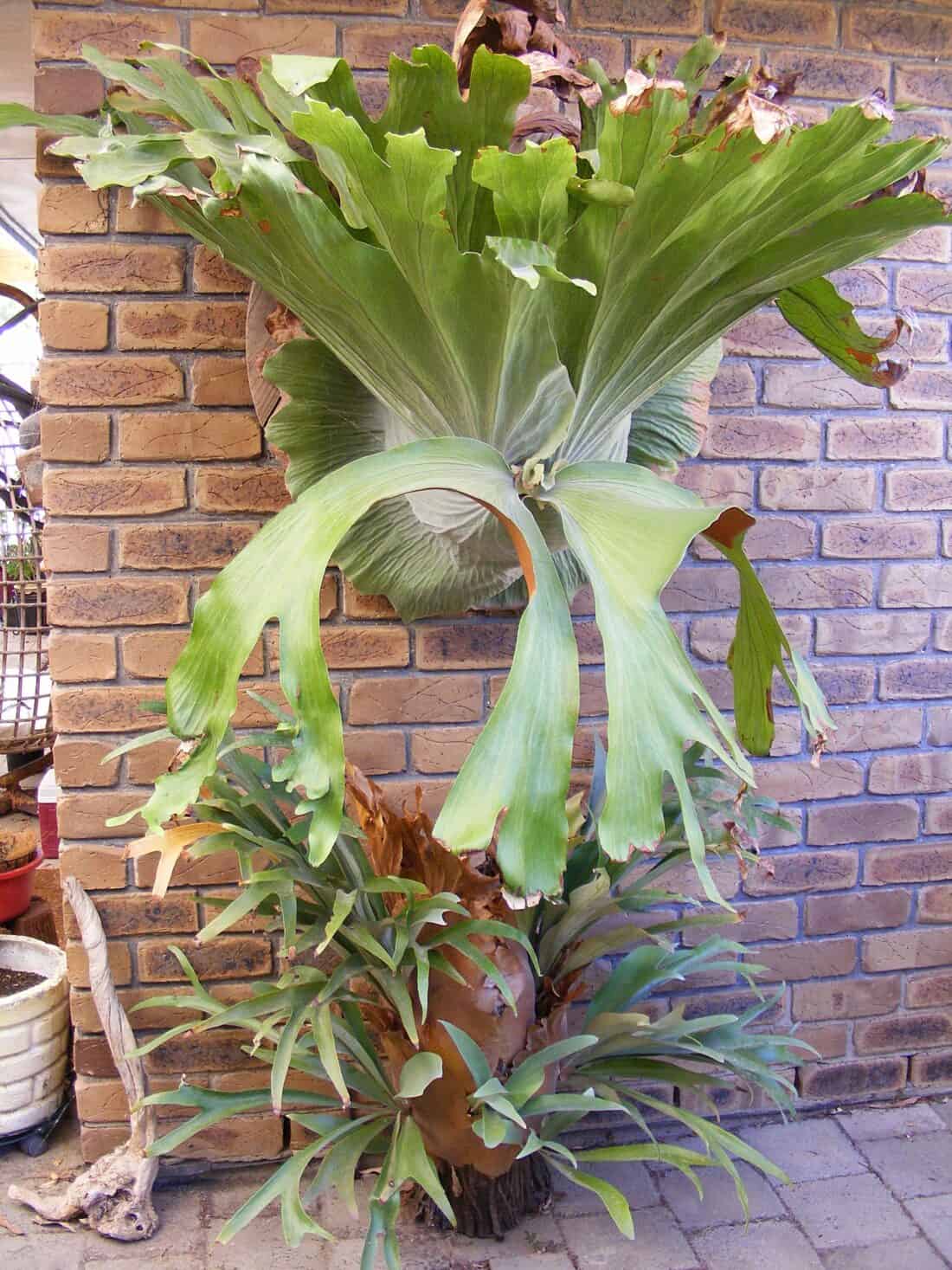
Where to Hang Your Staghorn (or Elkhorn Fern)
- Anywhere in the house (where you might hang art or other sculptures). Hang the fern above a sofa or armchair to add a touch of greenery to any living space. It can serve as a focal point or complement other decorative elements in the room. If you live in a dry climate, you might want to consider adding a small-scale humidifier near your fern.
- Bathroom: Hang the fern in the bathroom to create a spa-like ambiance and add a touch of greenery to the space. It can thrive in the humid conditions of the bathroom (or a kitchen) and enhance the overall decor.
- Outdoor Patio: Hang the fern on a sheltered patio or balcony to add greenery to outdoor living spaces. It can thrive in the dappled sunlight and enhance the outdoor decor.
- Vertical Garden: Incorporate the mounted fern into a vertical garden or living wall for a unique and space-saving display. It can be combined with other plants to create a lush and vibrant vertical oasis.
- Under a Tree: Hang the fern under the canopy of a large tree in the garden or backyard. It can benefit from filtered sunlight and provide a natural focal point in the outdoor landscape.
- On a Fence: As you make spaces in your garden and treat areas as ‘rooms’ – you could hang staghorn fern species from a fence to create a focal point or draw your eye away from the visual barrier of a fence.
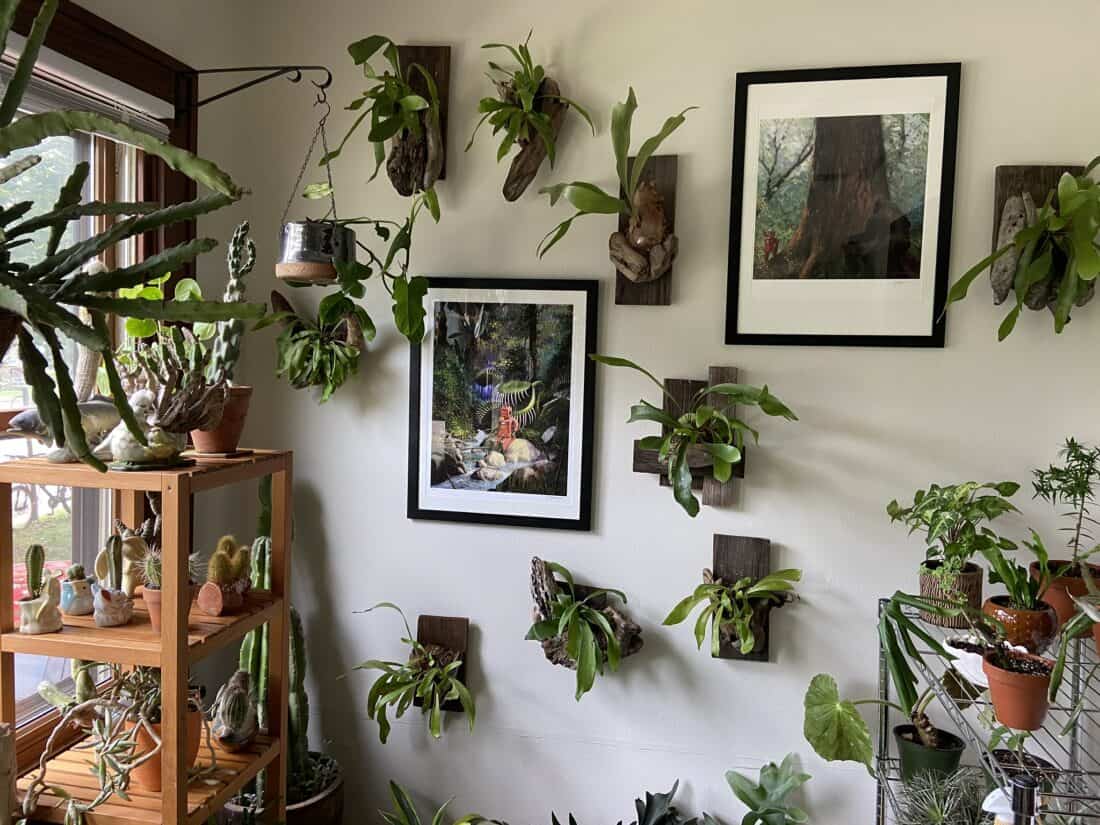
I love how those look mounted on the wall like that! Very artistic. What kinds of climates do they do well in?